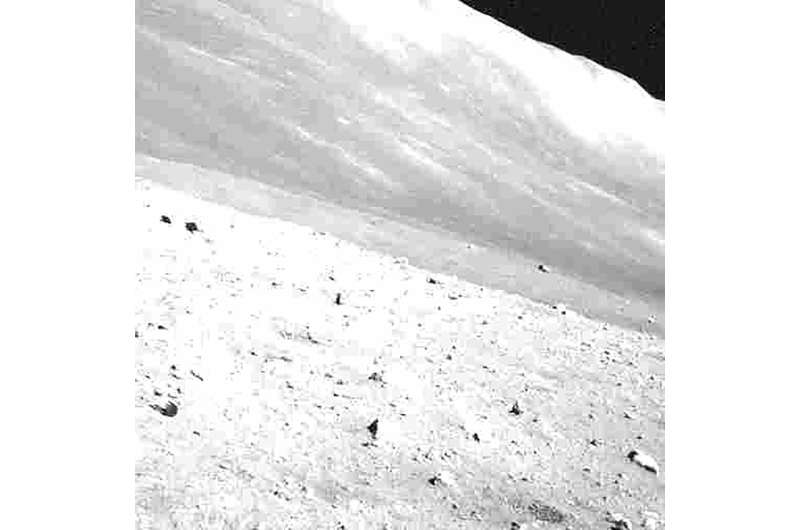Japanese Lunar Lander Successfully Survives Its Third Night on the Moon
Key Takeaway
Japan’s SLIM (Smart Lander for Investigating the Moon) lunar lander, designed to operate for only a single day, has remarkably survived three brutal lunar nights, defying expectations and continuing to transmit data and images despite its unintended upside-down orientation on the lunar surface.
Summary
- The Japanese Space Agency’s SLIM (Smart Lander for Investigating the Moon) landed on the Moon on January 19, 2024, with the mission to test lunar landing technology and collect data about surface geology.
- After landing, SLIM ended up in an upended position, resting on its face, which affected the solar panel orientation and limited its operational time.
- SLIM was not designed to survive the harsh lunar nights, where temperatures plummet to -170°C, but it unexpectedly survived the first lunar night that began on January 31.
- Despite being disbanded in March, the operations team received signals from SLIM after the second and third lunar nights, indicating its continued operation.
- SLIM was even spotted by cameras on board the Chandrayaan-2 orbiter after the second lunar night.
- On April 24, 2024, JAXA announced that SLIM had survived its third lunar night, continuing to transmit images and data.
- The mission aimed to test pinpoint landing technology that uses facial recognition systems to identify craters and achieve an accurate touchdown within 100 meters.
- Although the landing was accurate, SLIM’s upended position was unexpected.
- JAXA hopes to use the data from the resilient SLIM to learn more about the origin of the Moon by analyzing the surface geology.

The Resilient Lunar Explorer: Japan’s SLIM Lander Defies Expectations
When Japan’s Space Agency (JAXA) launched the SLIM (Smart Lander for Investigating the Moon) mission, little did they expect the small lunar lander to become a groundbreaker in lunar exploration. Designed to operate for just a single day, SLIM has defied all odds by surviving three brutal lunar nights, where temperatures plummet to a bone-chilling -170°C (-274°F).
SLIM touched down on the lunar surface on January 19, 2024, with the primary objective of testing lunar landing technology and gathering data about the Moon’s surface geology. However, the landing didn’t go entirely as planned. Instead of settling on its base, SLIM found itself in an upended position, resting on its face.
This unexpected orientation had a significant impact on the solar panel alignment, limiting the lander’s operational time to just a few hours after dawn and before sunset. Despite this setback, SLIM soldiered on, transmitting valuable data and images during its brief windows of operation.
One of the most remarkable aspects of SLIM’s mission is its ability to withstand the harsh lunar environment. The lander was never designed to endure the freezing temperatures and extreme conditions of the lunar night, yet it managed to power through not just one, but three consecutive lunar nights.
The first lunar night began on January 31, and against all odds, SLIM survived the ordeal, powering back up on February 15. This feat alone was a remarkable achievement, but SLIM wasn’t done yet.
Even after the operations team was disbanded in March, SLIM continued to surprise everyone. Signals were received from the lander after the second and third lunar nights, indicating its unwavering determination to keep exploring.
JAXA’s announcement on April 24, 2024, confirming SLIM’s survival of its third lunar night, was a cause for celebration among space enthusiasts worldwide. The resilient little lander, against all expectations, continued to transmit data and images, providing invaluable insights into the lunar surface.
One of the key objectives of the SLIM mission was to test cutting-edge pinpoint landing technology. This innovative system utilizes facial recognition algorithms to identify craters on the lunar surface, allowing for highly accurate landings within a 100-meter radius of the target location.
While the landing itself was accurate, SLIM’s upended position was an unexpected outcome. Nonetheless, the data gathered during this process will undoubtedly contribute to the refinement of future lunar landing techniques.
JAXA’s ultimate goal with the SLIM mission is to gain a deeper understanding of the Moon’s origin by analyzing the surface geology. The lander’s unexpected longevity has provided an unprecedented opportunity to collect data over an extended period, potentially shedding new light on the formation and evolution of our celestial neighbor.
SLIM’s remarkable resilience and determination have not only captivated the scientific community but have also inspired future lunar exploration missions. The lander’s ability to overcome adversity and adapt to unforeseen circumstances serves as a testament to the ingenuity and perseverance of space exploration efforts.
As we look towards the future, SLIM’s achievements will undoubtedly pave the way for more ambitious and daring lunar missions, driving us ever closer to unlocking the mysteries of our nearest celestial neighbor.
HASHTAGS:
#SLIM, #LunarExploration, #JAXA, #MoonLanding, #SpaceScience, #LunarGeology, #ResilientTechnology, #MoonOrigin, #PinpointLanding, #SpaceInnovation #Japanese Lunar Lander
Source:
- Phys.org: Japan’s Moon Lander Wasn’t Built to Survive the Night: This article discusses Japan’s Moon lander and its limitations, particularly its inability to survive the extremely cold lunar nights.

